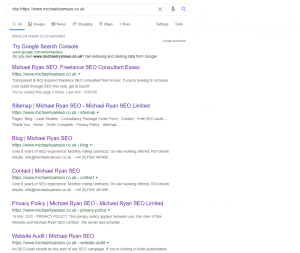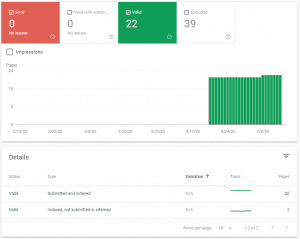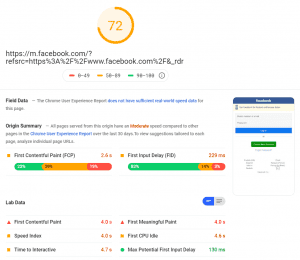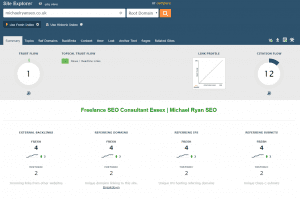You might be asking yourself, why do I need to do undertake and SEO audit on my site?
Well the competition to stand out on search engines is increasing every single year as business owners become more tech-savvy with their approach.
It is more vital than ever before to be more visible than your competitors online. One way of doing this is through SEO.
Ensuring your website is technically sound from an SEO perspective will make it easier for Google to understand your website and rank you in front of your audience. Bingo – more traffic – more leads & sales.
You can spend thousands creating an aesthetically appealing site but if there is no focus on SEO you’re going struggle to receive any organic traffic.
What Will Affect Your Websites SEO Performance?
Before diving into your audit, you need to understand what factors are affecting the performance of your website. Once you know this, it is easier to find the necessary changes needed.
Another point is Google has moved to mobile-first indexing, so you should perform your crawl with this in mind. Check your analytics to see what device your users tend to use to view your website, this will help you amend your audit where needed.
These factors can be split into 3 categories.
- Technical factors: This includes elements such as site speed, site indexing & hosting.
- On-site factors: This looks at how your pages are optimised. Title tag, H1’s & content.
- Off-site factors: This is in reference to your backlink profile
Now we know what we are looking for. It is time to get stuck into auditing your site.
1. Crawl your website
The Tecfirst step is to crawl your website. There are plenty of different tools you can use to do this.
I provide a free SEO technical audit for your business which is sent to your inbox 24 hours. Unlike automated crawl’s I will manually give tips on how to improve your site based on the crawl.
You can also crawl your site through google by using site:domain.com. Examples below.

The pages that don’t show will give an indication of any issues on the site.
Another great tool to use is screaming frog. It’s free to use if your site has less than 500HTML pages. I would say it is the best tool for crawling, it gives you a complete overview of your site layered by HTML, java, CSS & images. As well as external data.

It would also be wise to make sure you check our google search console. Here you can submit your XML sitemap to see if google finds any issues. You can also check your crawl budget and frequently the site is crawled.

You want to make sure your site is being crawled as efficiently as possible to be sure to check out the following.
Make sure there is only one version of the website
You want to ensure there is only one version of the website being crawled. Duplication will essentially split the authority to each duplicated page making is increasingly hard for you to rank. If your site is on https:// make sure the http version redirect to this.
You may all use URL parameters to track marketing activity, make sure you notify google of this through search console.
Deal with any errors
If you have any 404 pages, redirect the user to the more relevant page. Google does not like sending users to pages with no content.
Update broken or 301 links
Once you have redirected the necessary page on your site. Update your internal link to the new pages. This will stop google having to crawl between the redirects.
Update your indexing
There might be a few pages that you do not necessarily need the search engine to see. For example, terms & conditions or privacy pages, noindex these to save crawl budget.
2. Conduct On-Site Checks
The next part to look at how your pages are optimised. You can have a technically sound site but if you are not telling the search engine or the user what is on the page, you simply will not rank for the keywords you desire. So, here is how you start.
URL structure / Website Sitemap
The first part of this is looking into your URL structure & the website hierarchy. This is vital in search engines crawling and understanding your services or products.
So as a rough guide you should be looking for a nice silo structure:

Title Tags
‘Page titles should appear uniform and consistent across the whole website. There should be no duplicates, and there should be none that exceed 70 characters.’ These are the basic guidelines.
The page titles should follow the format of KEYWORD – COMPANY NAME
Take my site for example: https://ink-digital-dev.10web.site/free-seo-audit/
The URL slug is relevant to the keyword – ‘Free SEO Audit’
The title tag is ‘Free SEO Audit | Michael Ryan SEO’
H1 & Heading Structure
Heading tags should flow in order from H1 to H4 on each page. Each page should have only one H1 and this should contain the primary keyword for that page.
So to use my free SEO audit page. My H1 is ‘Free SEO Audit’
Content
You want to make sure your content is created firstly for the users in mind and secondly the search engine. I cannot help but cringe when I see a page optimised for ‘cheap shoes’ that says ‘cheap shoes’ 100 times in the first paragraph.
Instead you want to write useful content including the keyword you have optimised the page for, but don’t force it in, it has to be natural.
FAQ content & reviews are a good way to provide further content for pages while potentially increasing conversion rates.
Ensure that all content is unique, and you do not duplicate across pages. This will confuse the search engine and affect your rankings. You can use the following tool to check any duplication.
Meta Descriptions
Google announced in 2009 that meta descriptions do not directly affect your rankings. However, this does not mean they’re not important.
Meta descriptions affect your CTR (Click-Through-Rate) which is a ranking factor.
Guidelines: There should be no duplicates and none above 160 characters.

The meta description is the description users will see when they find your website via a search engine, so it is important to capture this audience. Explain what the user will find on the page and ask potential customers to get in touch!
3. Review your site speed
The speed of your site is becoming increasingly vital as google looks to mature its algorithm. Google as a company main goal is to provide the most relevant result for a user’s search. Users prefer sites that load quickly, hence why speed is such an important ranking factor.
Google released some guidelines in regards to speed back in 2018, specifically mobile, it’s well worth a read.
The slower your website, the higher the bounce rate your site will have. You will essentially be losing out on traffic.

There are a couple of different tools I would suggest for analysing your speed.
Firstly submit your URL through Googles page speed insight tool.

Page speeds insights will give you a view into speed across mobile & desktop. As well as load page speed the tool will breakdown at what is slowing down your site across the following.
- First Contentful Paint
- Speed Index
- Time to Interactive
- First Meaningful Paint
- First CPU Idle
- Input Latency
Fixing this is more of a development task and is down to how your website has been designed. If you score low, speak to your developer about how you can improve this.
4. Analyse your backlink profile
The next part is to ensure your website is also generating authority off-page through natural links. You can have the most technically sound website & perfectly optimised pages with content, but if you have no links, you are going to struggle to compete against the most authoritative websites.
Google uses backlinks to understand the quality of your website through how many times and from what sources your site is being mentioned.
I use Majestic to view my backlink profile, you want to generate as many unique links as possible instead of getting links from the same source. Search engines will see this as spammy and could devalue your site, or even worse penalise you.

Through tools such as majestic you can export your backlinks to understand the following opportunities.
- Fix Broken External links
Find links that are not linking to the correct page or are broken and ask the webmaster to update these.
- Unnatural links
If there are any links that don’t look natural, consider disavowing these.
- Competitor analysis
Submit your competitor’s website and export their backlink profile also. This will give you inspiration for what types of websites you should be sourcing partnerships with. Example below.

I am currently working on another post looking at all the areas businesses should be looking at to generate links. I will update this post with a link once done!
Conclusion
Whether you have got someone looking after your SEO or you are doing this yourself, make sure you investigate these 4 areas when conducting your technical SEO audit. If you are making significant changes across your site, then push the changes through google fetch and render tool via search console. You could see an instant impact.
Let me know what else you cover in your technical SEO audits.
Author: Michael Ryan is a transparent & ROI focused SEO consultant from Essex.



